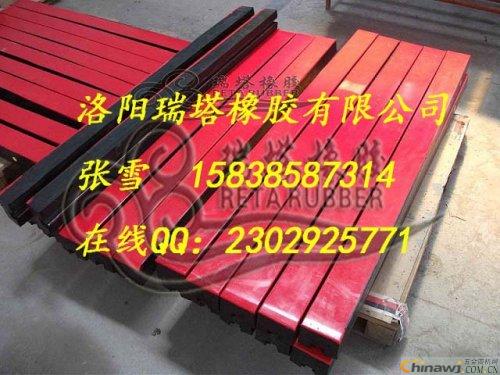1. The Quality of Rubber
The core factor determining the quality of a buffer strip is the rubber used. However, in the domestic market, there is a significant price difference between buffer strips, mainly due to variations in the type and quality of rubber. This directly affects the overall performance and durability of the product.
When subjected to oblique cutting forces, the buffer strip relies on its own rubber elasticity to absorb and reduce the impact. Unfortunately, there is no unified national standard for testing or implementing the quality of buffer strips, leading to confusion among consumers and making it difficult to distinguish between high-quality and low-quality products.
2. Bonding Strength
One of the most frustrating issues for users is the bonding strength of the buffer strip, which is not visible from the surface. This issue often only becomes apparent during use, and it is referred to as "stripping" in international terminology.
To accurately measure the bonding strength, specialized equipment is required, making it challenging for manufacturers to guarantee consistent performance. In addition, advanced thermal vulcanization technology is rarely used by domestic producers, further affecting the reliability of the bond.
3. Connection Methods
In China, two main connection methods are commonly used. One is an aluminum alloy structure, which was considered outdated in Germany during the 1970s and 1980s. This method can cause the buffer strip to vibrate or shift, reducing stability and posing potential safety risks.
Another common method is steel-based connections, which are widely used by companies like Rita Rubber. However, in China, the use of aluminum alloy structures underground is prohibited due to its reactive nature, which could lead to safety hazards.
4. Common Misunderstandings
Many users have misconceptions about flame-retardant and anti-static buffer strips. These types of buffer strips typically include flame retardants or antistatic agents between the wear-resistant layer and the rubber, which results in a black color.
For safety reasons, it's recommended to choose a manufacturer that can provide test reports, such as Rita Rubber, to ensure the buffer strip meets quality and safety standards.
5. Quality of the Wear Layer
The wear-resistant layer of a buffer strip is usually made of ultra-high molecular weight polyethylene (UHMW-PE). The molecular weight of this material significantly affects the performance, including wear resistance and impact resistance.
Rita Rubber uses a specially formulated material suitable for underground environments, which differs from the materials used by many other manufacturers, resulting in better overall quality and longer service life.


Jiangyin Suofei Electronic Technology Co.,Ltd. , https://www.suofeiscales.com